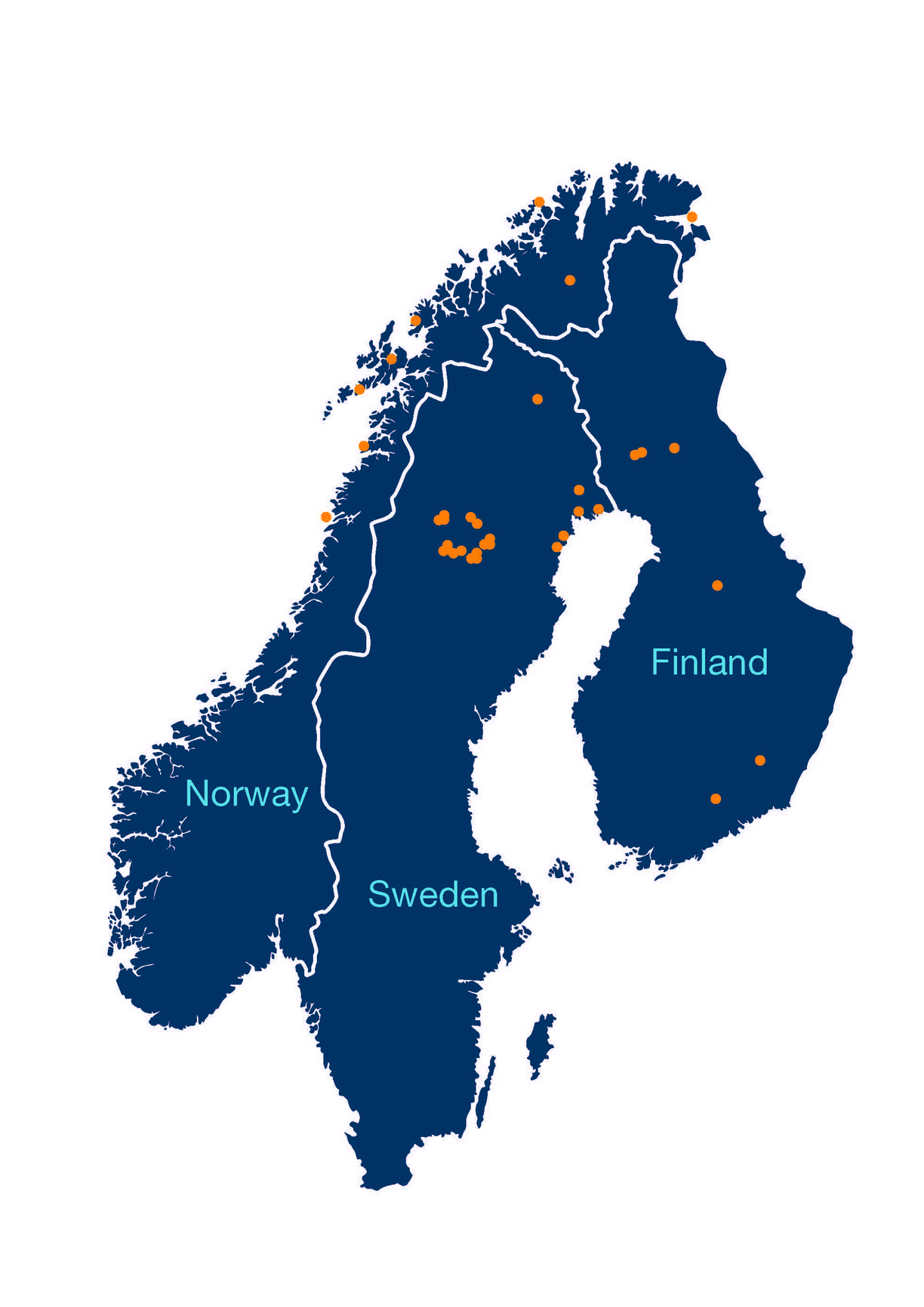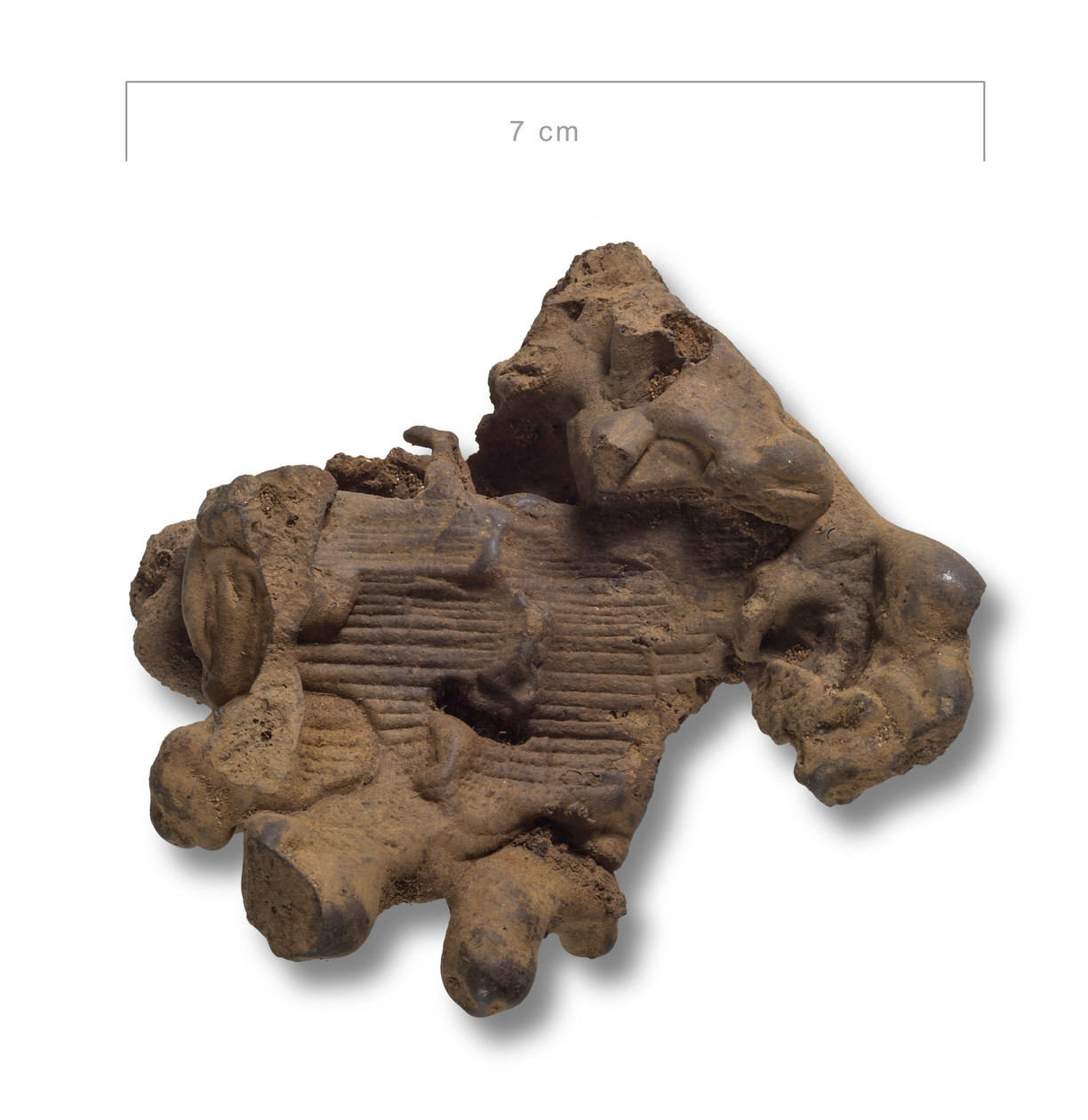
In over 40 sites across an area that extends over northern Finland, Sweden and Norway, advanced iron and steel objects were produced and smithed by hunter-gatherer groups 2000 years ago
13 November 2023
Widespread steel making process in the north 2000 years ago
In over 40 sites across an area that extends over northern Finland, Sweden and Norway, advanced iron and steel objects were produced and smithed by hunter-gatherer groups more than 2000 years ago. These completely new findings about widespread advanced iron and steel production are presented in a new doctoral thesis which may change the current European and global historiography. The findings are made by researchers at Luleå University of Technology.
It was within an ace that the finds were discovered. Most of the around forty archaeological sites are located under water since decades, as a consequence of the big hydroelectric-power expansion in the north in the twentieth century. The prehistoric remains having been analysed are metal residuals known as slags from, as it turned out, 2000-year-old advanced and widespread iron and steel production. The finds were re-discovered in collections in Sweden, Norway and Finland that are preserved after the archaeological surveys and excavations made in connection with the hydroelectric-power expansion in 1940 to 1980. The slags have not been scientifically analysed earlier. They have been left unspoiled in the collections for many decades.
Carbon-14 dating
“It is thus only now that the age of these metal finds has been established by using carbon-14 dating, a reliable technique allowing age determination of prehistoric remains. In addition, the finds have been analysed from an archaeometallurgical point-of-view, a discipline that explores metal-craft remains and traces. There has been interdisciplinary collaboration within the project, including History of Technology, Archaeology and Archaeometallurgy, and this is absolutely an important reason why we have been so successful,” says Kristina Söderholm, Professor of History of Technology at Luleå University of Technology, and project manager.
In 2021, when her research group published their first results in the prestigious journal Antiquity External link, opens in new window. , they attracted international attention. At that time, the research group had found, among other things, 2000-year-old iron production furnaces, also known as bloomery furnaces, in which steel was produced. The furnaces were found at two separate sites in Norrbotten in northern Sweden, alongside a contemporaneous smithing site. At the smithing site, vast amounts of slag were found alongside an axe and knives made of several layers of iron and steel of different qualities. These are among the oldest temperature-treated-steel objects that have been found in Europe. The chemical analyses of slags and objects showed that iron ore came from lakes and mires in the region. The amount of slags indicated that this was not small-scale, impulsive activities but a comprehensive production of up to 80 kilo iron by each furnace.
External link, opens in new window. , they attracted international attention. At that time, the research group had found, among other things, 2000-year-old iron production furnaces, also known as bloomery furnaces, in which steel was produced. The furnaces were found at two separate sites in Norrbotten in northern Sweden, alongside a contemporaneous smithing site. At the smithing site, vast amounts of slag were found alongside an axe and knives made of several layers of iron and steel of different qualities. These are among the oldest temperature-treated-steel objects that have been found in Europe. The chemical analyses of slags and objects showed that iron ore came from lakes and mires in the region. The amount of slags indicated that this was not small-scale, impulsive activities but a comprehensive production of up to 80 kilo iron by each furnace.
Shows extensive and equally advanced smithing knowledge as the Romans
The research group was convinced that there was reason to believe that the advanced iron and steel production in the northernmost Sweden 2000 years ago was more widely spread, and launched an intensive programme of work to prove this. Today, the researchers can show that there was production at 40 further different sites located in an area across northern Sweden, Finland and Norway. That it took place so early and so far away from the presumed centre for iron and steel production in ancient Europe, the Roman Empire, was not known earlier. That it was hunter-gatherers who had this advanced knowledge, and not the agricultural population, is also a fact that is contrary to prevailing historical ideas. The work of the research group shows that the northern hunter-gatherers had extensive and equally advanced smithing knowledge as the Romans, contemporaneous and partly prior to them. Furthermore, groups were probably more sedentary than historians and archaeologists earlier believed.
“We understand this since we have considered the complete production process, from the collection of raw material to the production within the prehistoric hunter-gatherer environment. We have also considered the process in the light of the arctic landscape and climate”, says Carina Bennerhag, archaeologist at Norrbottens Museum. She was recently awarded a doctoral degree in History of Technology at Luleå University of Technology with the thesis Steel Making Hunter-Gatherers in Ancient Arctic Europe.
Carina Bennerhag and Kristina Söderholm suggest that their research group probably has found only a low number of the sites, where hunter-gatherers produced iron and steel using advanced techniques in northernmost Europe. Despite the fact that surveys of prehistoric remains so far have been very scarce in northern Sweden compared to southern Sweden, the group has discovered a relatively high number of metal finds in the northern collections. In the near future, the research group will continue exploring the factors why so many prehistoric hunter-gatherer societies across such a vast geographical area and around the same time had the opportunity or the choice to pursue and maintain iron and steel production.
The doctoral thesis Steel Making Hunter-Gatherers in Ancient Arctic Europe (diva-portal.org) External link, opens in new window. containing all the finds and results, constitutes an important milestone of the research that has been conducted at Luleå University of Technology since 2016. The research is a collaboration between the disciplines history of technology, archaeology and archaeometallurgy, and is partly a collaboration with Norrbottens Museum. The research has been financed by, among others, the Swedish Research Council, Berit Wallenberg Foundation and Riksbankens jubileumsfond.
External link, opens in new window. containing all the finds and results, constitutes an important milestone of the research that has been conducted at Luleå University of Technology since 2016. The research is a collaboration between the disciplines history of technology, archaeology and archaeometallurgy, and is partly a collaboration with Norrbottens Museum. The research has been financed by, among others, the Swedish Research Council, Berit Wallenberg Foundation and Riksbankens jubileumsfond.
Lecture on Youtube (in Swedish) External link, opens in new window.
External link, opens in new window.

Slag, typical iron waste from iron production
Contact
Kristina Söderholm
Carina Bennerhag
- Postdoctoral researcher
- 0920-493678
- carina.bennerhag@ltu.se
- Carina Bennerhag
Published:
Updated:
